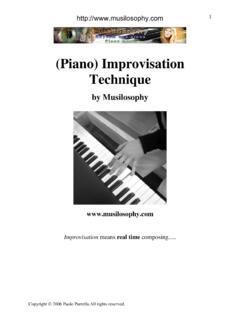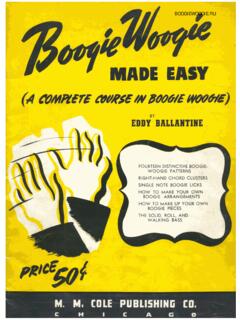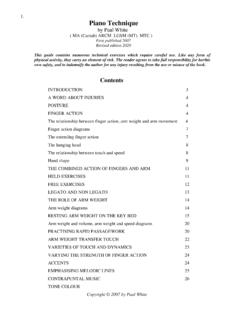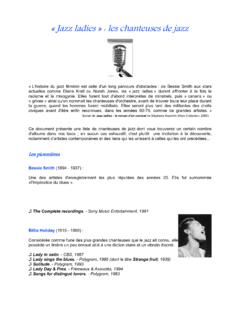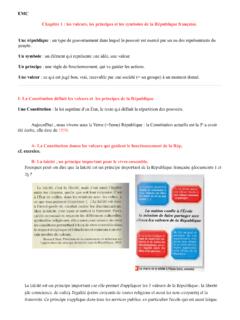Transcription of Piano - ABRSM
1 1A guide to the new requirements for Practical GradesPianoScales & Arpeggiosfrom 2021 2020 by The Associated Board of the Royal Schools of MusicCover image by Kate Benjamin & Andy Potts, with thanks to Brighton College Photography by Kate BenjaminContentsPiano Scales and arpeggios from 2021: An introduction 3 Benefits of scales and arpeggios 3 Research and consultation 3 Aims of the revision 4 Overview of changes 5 Syllabus overlap 6 Supporting resources 6 The new requirements: grade by grade 7 Initial Grade 7 Grade 1 8 Grade 2 9 Grade 3 10 Grade 4 11 Grade 5 12 Explanatory notes covering Grades 6 8 13 Grade 6 14 Grade 7 15 Grade 8 16 The new requirements: key scheme 173 Piano Scales and arpeggios from 2021: An introductionPiano teachers who regularly use ABRSM exams have come to expect revised syllabuses every two years, with a 100% change of repertoire each time. The 2021 & 2022 syllabus, published in July 2020 for exams from 1 January 2021, is no exception. Significantly on this occasion, the new Practical Grades syllabus also includes a complete update of the scales and arpeggios requirements, the first since of scales and arpeggiosPlaying scales and arpeggios, whether tested in an exam or not, is important for building strong technical skills such as reliable finger movement, hand position, co-ordination and keyboard fluency.
2 Playing them also helps to develop pitch and interval awareness, familiarity with keys and their related patterns, and control of tone. This leads to greater confidence and security when sight-reading, learning new pieces and performing from a score or from memory, as a solo musician or with others. Research and consultationThe changes that we ve made are the result of collaboration and consultation with Piano teachers at all levels from across the globe. The new requirements are the result of three years of development work and form part of our ongoing programme of evaluation and improvement of our exams. The process began in March 2017 with a consultation meeting involving leading Piano educationalists and ABRSM examiners, as well as a team of ABRSM staff. Over a number of months, proposals were developed and refined by a team of consultants leading to a first, draft, set of requirements. In that draft, we took the opportunity to test some quite different approaches the proposals were shared widely with teachers using ABRSM Piano exams, for consultation and feedback (November 2017).
3 We received approximately 1,000 very helpful responses (from teachers in 44 countries) to the first set of proposals via our survey. All the feedback was reviewed and analysed in detail and our consultants responded by further developing and refining the requirements, where there was clear consensus amongst teachers that changes were needed. This led to a second draft set of requirements that was again shared with teachers for further feedback (April 2019). The consultation on the second set of proposals resulted in responses from approximately 1,500 teachers from 58 different countries. There was an overwhelmingly positive response to these and, while some further adjustments were made in response to feedback, they went on to form the core of the final requirements that will apply for exams from January SCAleS ANd ARPeGGIOS fROM 2021: AN INTROduCTION 4 Aims of the revisionThe main aim of the revision was to arrive at a set of requirements that are realistic and manageable in terms of preparation and assessment load, and that follow a clear, logical and gradual progression through the grades.
4 We have worked to focus on requirements that are appropriate to the grade in their rigour and level of demand, moving away from a situation where a large part of the challenge has been about the volume of requirements to prepare. The reduction in volume has primarily been achieved by removing requirements already tested in earlier grades, reducing the number of requirements that duplicate finger patterns, and no longer asking for requirements to be prepared hands separately and hands together at the same grade. The reduction also means that a greater percentage of the work prepared will be assessed in the have also worked to make sure there is coherence across the different types of requirements set at each grade, for ease of preparation. This means that contrary-motions, chromatics, diminished sevenths etc. all tend to start from the key note of scales set for the aim of the revision was to achieve parity, where appropriate, with the requirements set for other instruments, the grade when types of requirements are introduced.
5 However, the demands, both technical and physical, of playing individual requirements on the Piano was the final decider when determining what should be set at any are many different types of useful exercises for developing technique that could have been included in the syllabus but haven t been. That is not to suggest they are not important or beneficial activities for developing pianists, simply that their inclusion on the syllabus might not necessarily result in any more meaningful assessment. It is hoped that a range of other exercises and approaches to practising scales will be covered in lessons outside of exam preparation. Our focus has been on designing a set of requirements from Initial Grade through to Grade 8 that is appropriate for assessment purposes. While there is an underlying progression route through the grades in the design of the syllabus, it is not intended to act as a teaching SCAleS ANd ARPeGGIOS fROM 2021: AN INTROduCTION 5 Overview of changesThe following are the main changes and design principles that teachers and learners will find in the new set of requirements.
6 New keys are generally introduced hands separately (only) and are then set hands together (only) on the following grade. Requirements are no longer to be prepared both hands separately and hands together. A selection of keys is set at each grade (there is no longer an all keys requirement at Grades 5 and 6). This helps to improve the progression through the grades and brings the Piano requirements into line with other instruments, particularly strings and wind. importantly, all keys are still covered across Grades Initial 5 and again across Grades 6 8 All candidates prepare, and are assessed on, the same set of requirements there are no options, except the minor form for scales up to Grade 5. There are no requirements set over three octaves. At Grades 6 8, all requirements are based on four key-centres/note-centres at each grade. dominant sevenths are now required to resolve on the tonic, to encourage a greater understanding of the harmonic function of the chord (and matching requirements for string and wind players).
7 Some keys and requirement types appear earlier than in the previous syllabus, and others later; a small number of requirements have been removed entirely. A new Initial Grade is introduced. Requirements for this pre-Grade 1 exam have been developed as part of the overall process and lead naturally into the new Grade 1 more detailed, grade-by-grade description of the new requirements can be found on pages 7 SCAleS ANd ARPeGGIOS fROM 2021: AN INTROduCTION 6 Syllabus overlapWe understand that it can take time for teachers and learners to adapt to new requirements, particularly if they have already begun preparing for an exam, and so the following arrangements will be in place: An overlap period of a full year will apply worldwide ( including the uK & Ireland). The overlap period will apply to both Pieces and Scales and arpeggios for Practical Grades exams. Candidates may present their three Pieces and Scales and arpeggios from the 2019 & 2020 syllabus or from the 2021 & 2022 syllabus.
8 All the pieces and the scales must be from the same syllabus presenting a mixture from old and new will not be hope that these arrangements will allow for a smooth transition from the old to the new resourcesThe new requirements are supported by two suites of publications from ABRSM . Our Piano Scales & Arpeggios series has been fully updated to reflect the new requirements. There is one book per grade, including the new Initial Grade. Additionally, scale Explorer by Alan Bullard is our new resource for learners practising their scales and arpeggios. The series consists of five books covering the new requirements for Grades 1 5. These books include engaging activities that bring scales and arpeggios to life through exercises, improvisation , composition and creative short pieces built on the scale and arpeggio patterns for the grade. PianoPiano Scales & ArpeggiosScales & ArpeggiosABRSM Initial GradeGradeInInitial GradeNEWABRSM s revamped Piano Scales Trainer app is an all-in-one companion for practising scales, covering all the requirements at Grades 1 5 from the new syllabus.
9 Available for iOS and Android, the app features an extensive set of resources to help learners have fun practising scales and learn the requirements for their BullardScale Explorerfor PianoGRADE 1 scale Explorer for Piano | Grade 1 Alan BullardScale Explorerfor PianoGRADE 2 scale Explorer for Piano | Grade 2 Alan BullardScale Explorerfor PianoGRADE 3 scale Explorer for Piano | Grade 3 Alan BullardScale Explorerfor PianoGRADE 4 scale Explorer for Piano | Grade 4 Alan BullardScale Explorerfor PianoGRADE 5 scale Explorer for Piano | Grade 57 The new requirements: grade by gradeIn this section, the new requirements are presented grade by grade, with notes explaining their design and highlighting changes from the previous syllabus. The detailed information is included in order to help teachers and learners understand the rationale behind the changes as well as the underlying design across the grades as a should be played from memory, legato (unless specified staccato, or both) and in even notes.
10 When preparing for an exam, it is also important to refer to the Scales and arpeggios requirements and information in the syllabus (pages 14 15 of the 2021 & 2022 Practical Grades syllabus).Initial Grade RANGEREQUIREMENTSSCALESC major1 separatelyD minor (natural or harmonic or melodic, at candidate s choice)CONTRARY-MOTION SCALEC majora 5thhands starting on the tonic (unison); as pattern below{VB ARPEGGIOSC majora 5thhands separately; as pattern below V D minorExplanatory notes for Initial Grade Two scales one major, one minor are set, each to be played hands separately. These prepare for the one-octave hands-together and two-octaves hands-separately scales at Grade 1. An option of playing any form of the minor scale is offered, and the minor key has been chosen to ensure candidates play a scale that includes a black key (no matter which form is chosen). A contrary-motion scale is set in the same key as the major scale . It is set to a fifth only to avoid the challenge of turning the thumbs under while playing with both hands, and leads to the well-established one-octave requirement at Grade 1.}










